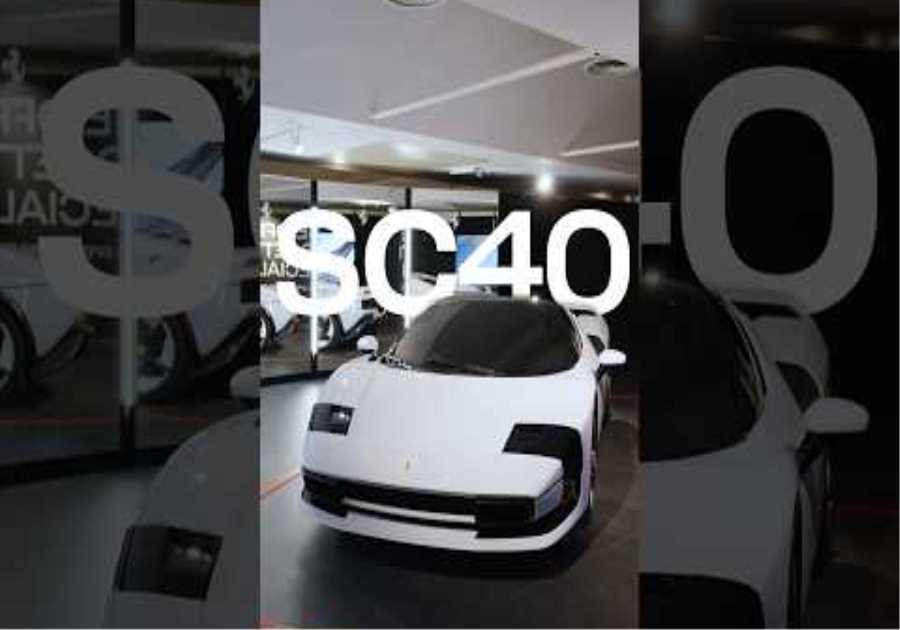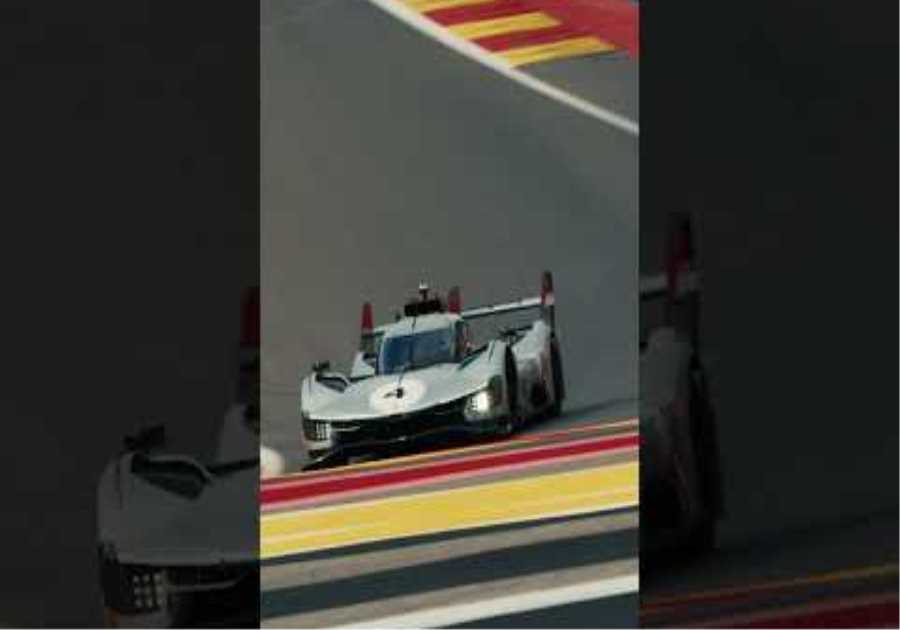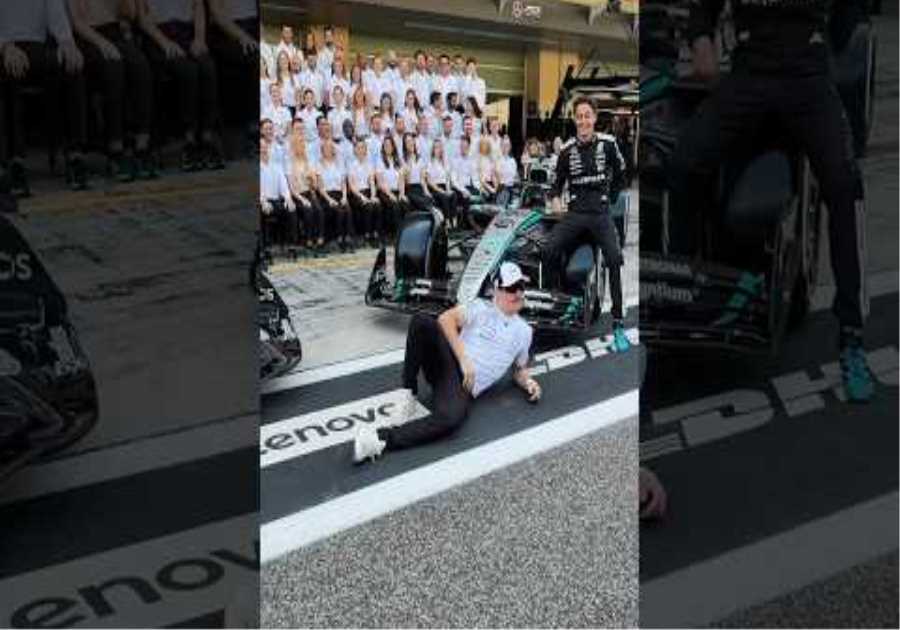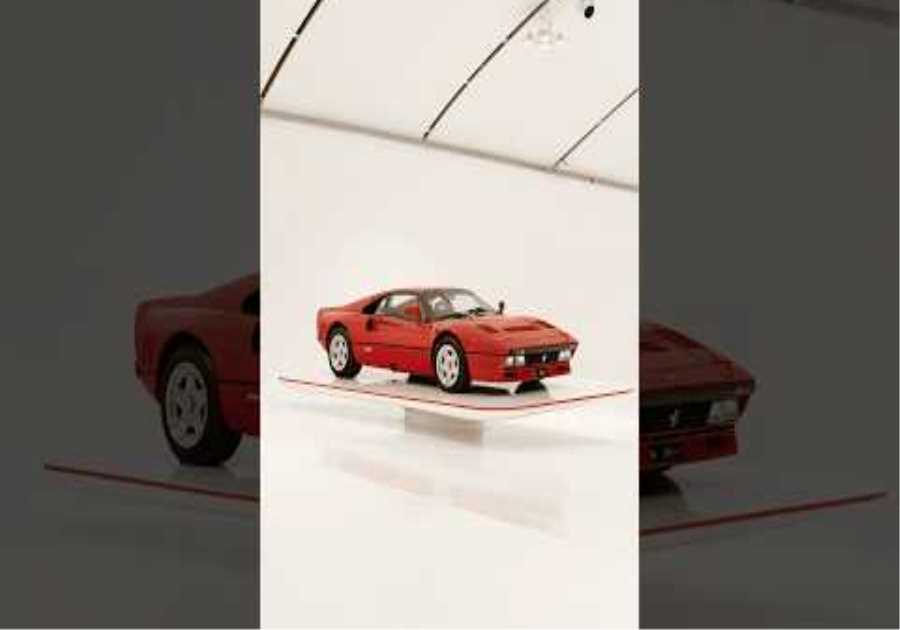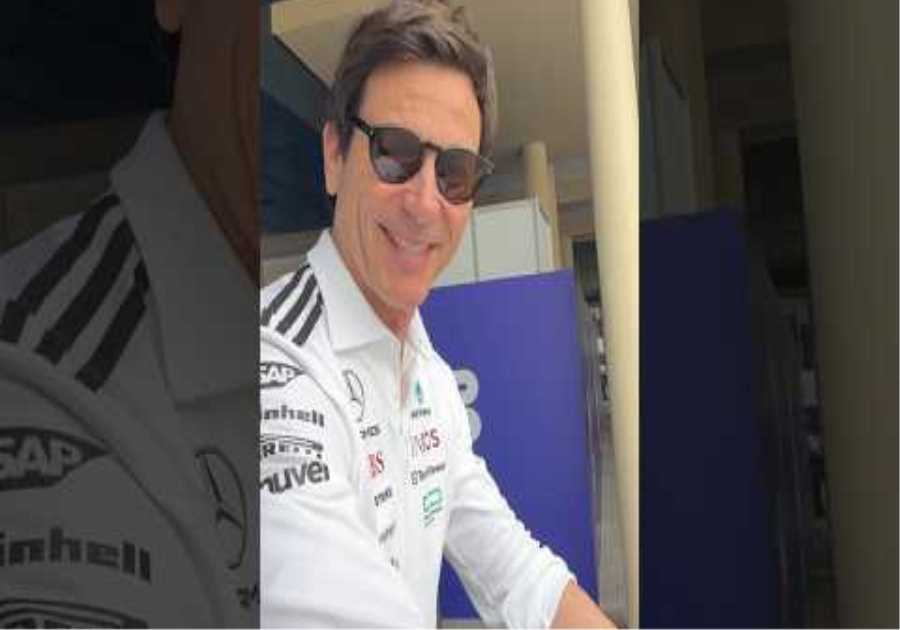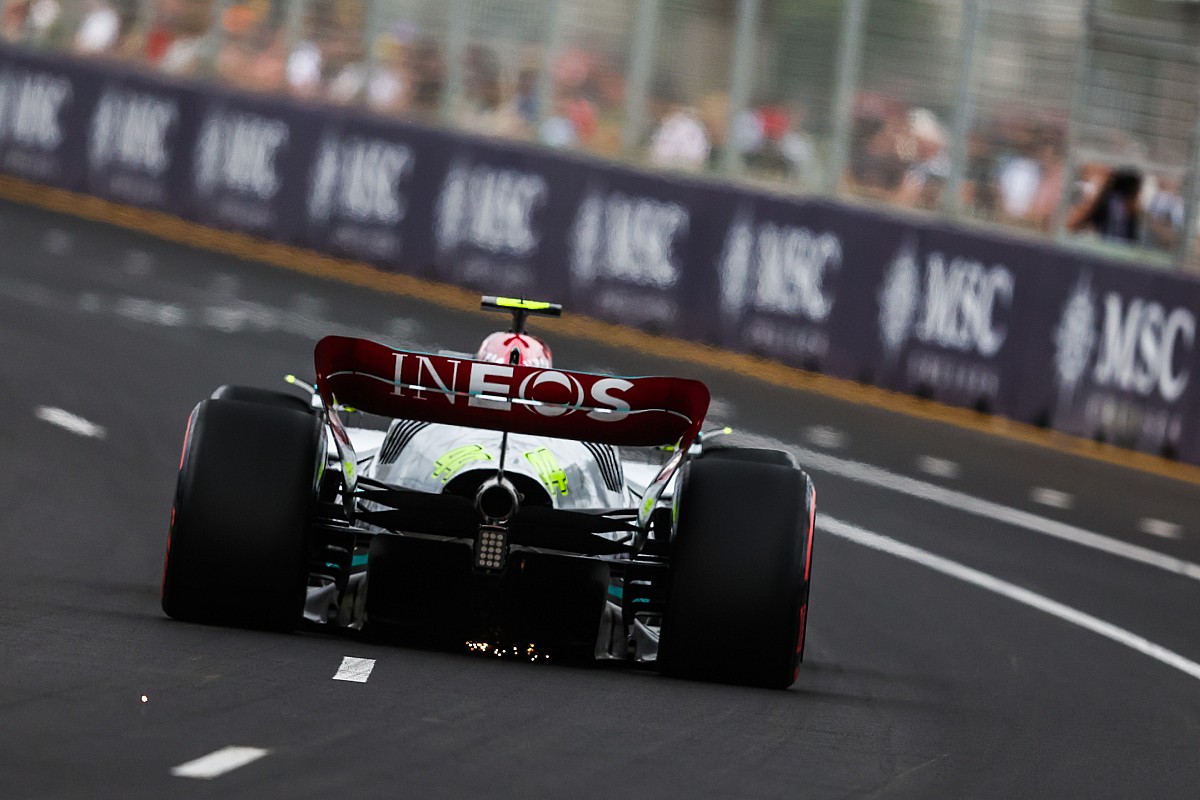
In a bid to gather more data to help understand the porpoising issue that is blighting its W13 car, Mercedes fitted some extra sensors to Hamilton’s chassis for the race, including a rideheight sensor that had a visible glowing light.
Most teams only opt to run these sensors during free practice before removing them for qualifying and the race given the extra weight they add. Teams are already struggling to get their cars down to the weight limit this year under the new technical regulations in 2022.
Mercedes motorsport strategy director James Vowles explained that Mercedes had “too many questions without answers” from its car, prompting the team to take the unusual step of keeping the sensors on Hamilton’s car for the race.
“In a normal year, you wouldn’t even consider not having sensors on the car,” Vowles said in Mercedes’ Australian Grand Prix debrief video.
“You would add what you need to, to make sure you understand what’s going on. But obviously this isn’t a normal year and the car is overweight.”
Hamilton finished the race in fourth place behind Russell, having lost a position to his teammate through the pitstops under the safety car.
Although Hamilton was able to catch Russell by the end of the race, struggles with overheating meant he could not get close enough to overtake.
Vowles said there would always be some small weight offset between the two cars due to the sheer number of parts each run, and that the added sensors were only a small cost to Hamilton.
“In terms of how it worked between the two cars, there are thousands of components that make up the racing car for George and for Lewis, and those components don’t weigh exactly the same amount,” Vowles said.
“There is variability of a few grams here and there and the actual car weight as mentioned on the FIA scales between the two cars in the race was within a few grams of each other, so Lewis did a fantastic job by carrying these extra sensors.
“Ultimately the cost was small, it was a matter of grams between the two, which is what we wanted.”
Vowles added that while Mercedes had gathered a good amount of data by running the sensors, he downplayed the findings offering a silver bullet that would turn the car’s pace around.
“It’s not that from this you can suddenly find something you will turn everything on its head and will find a solution in one race,” Vowles said.
“But it provides clues and understanding of what we need to do to move forwards.”

